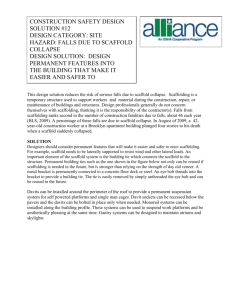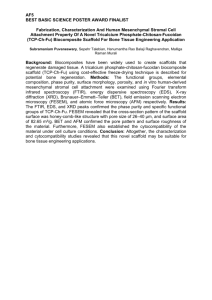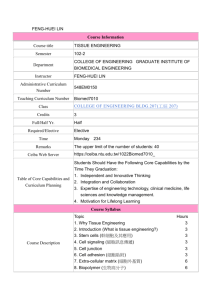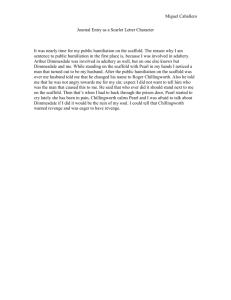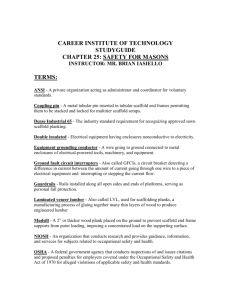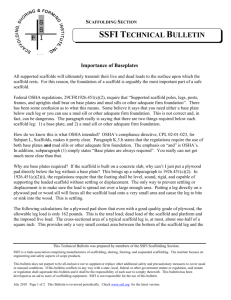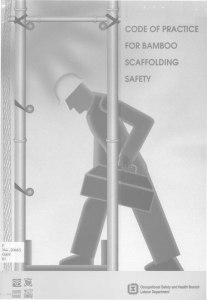Guidelines for Guying and Tying of Scaffolds
advertisement
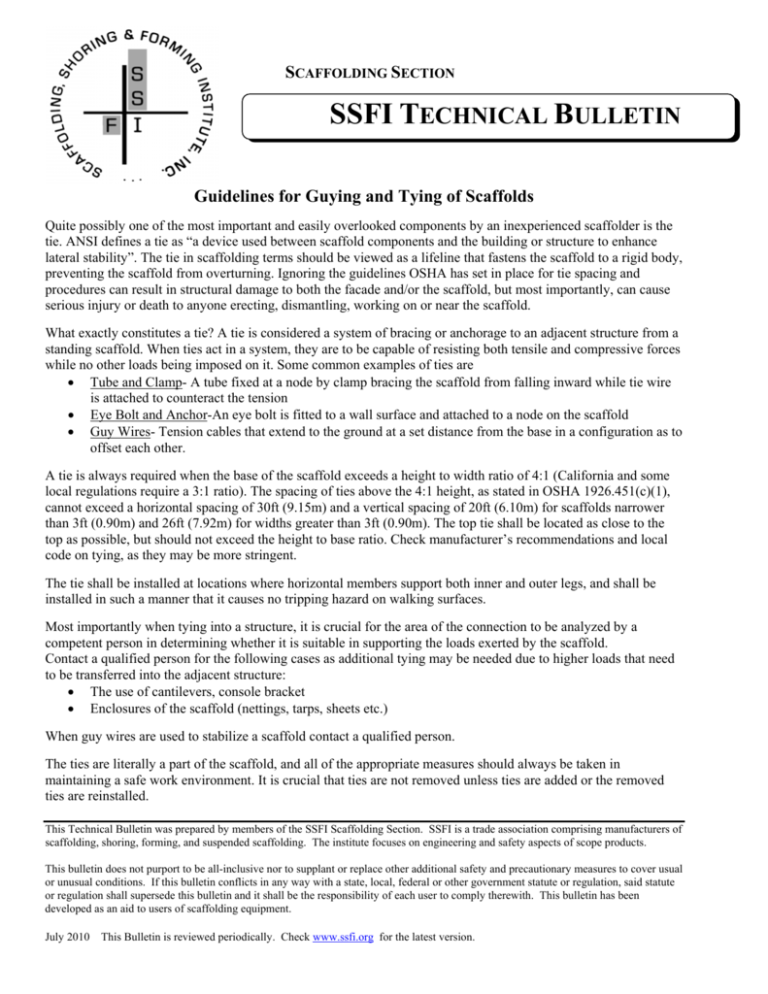
SCAFFOLDING SECTION SSFI TECHNICAL BULLETIN Guidelines for Guying and Tying of Scaffolds Quite possibly one of the most important and easily overlooked components by an inexperienced scaffolder is the tie. ANSI defines a tie as “a device used between scaffold components and the building or structure to enhance lateral stability”. The tie in scaffolding terms should be viewed as a lifeline that fastens the scaffold to a rigid body, preventing the scaffold from overturning. Ignoring the guidelines OSHA has set in place for tie spacing and procedures can result in structural damage to both the facade and/or the scaffold, but most importantly, can cause serious injury or death to anyone erecting, dismantling, working on or near the scaffold. What exactly constitutes a tie? A tie is considered a system of bracing or anchorage to an adjacent structure from a standing scaffold. When ties act in a system, they are to be capable of resisting both tensile and compressive forces while no other loads being imposed on it. Some common examples of ties are • Tube and Clamp- A tube fixed at a node by clamp bracing the scaffold from falling inward while tie wire is attached to counteract the tension • Eye Bolt and Anchor-An eye bolt is fitted to a wall surface and attached to a node on the scaffold • Guy Wires- Tension cables that extend to the ground at a set distance from the base in a configuration as to offset each other. A tie is always required when the base of the scaffold exceeds a height to width ratio of 4:1 (California and some local regulations require a 3:1 ratio). The spacing of ties above the 4:1 height, as stated in OSHA 1926.451(c)(1), cannot exceed a horizontal spacing of 30ft (9.15m) and a vertical spacing of 20ft (6.10m) for scaffolds narrower than 3ft (0.90m) and 26ft (7.92m) for widths greater than 3ft (0.90m). The top tie shall be located as close to the top as possible, but should not exceed the height to base ratio. Check manufacturer’s recommendations and local code on tying, as they may be more stringent. The tie shall be installed at locations where horizontal members support both inner and outer legs, and shall be installed in such a manner that it causes no tripping hazard on walking surfaces. Most importantly when tying into a structure, it is crucial for the area of the connection to be analyzed by a competent person in determining whether it is suitable in supporting the loads exerted by the scaffold. Contact a qualified person for the following cases as additional tying may be needed due to higher loads that need to be transferred into the adjacent structure: • The use of cantilevers, console bracket • Enclosures of the scaffold (nettings, tarps, sheets etc.) When guy wires are used to stabilize a scaffold contact a qualified person. The ties are literally a part of the scaffold, and all of the appropriate measures should always be taken in maintaining a safe work environment. It is crucial that ties are not removed unless ties are added or the removed ties are reinstalled. This Technical Bulletin was prepared by members of the SSFI Scaffolding Section. SSFI is a trade association comprising manufacturers of scaffolding, shoring, forming, and suspended scaffolding. The institute focuses on engineering and safety aspects of scope products. This bulletin does not purport to be all-inclusive nor to supplant or replace other additional safety and precautionary measures to cover usual or unusual conditions. If this bulletin conflicts in any way with a state, local, federal or other government statute or regulation, said statute or regulation shall supersede this bulletin and it shall be the responsibility of each user to comply therewith. This bulletin has been developed as an aid to users of scaffolding equipment. July 2010 This Bulletin is reviewed periodically. Check www.ssfi.org for the latest version.

